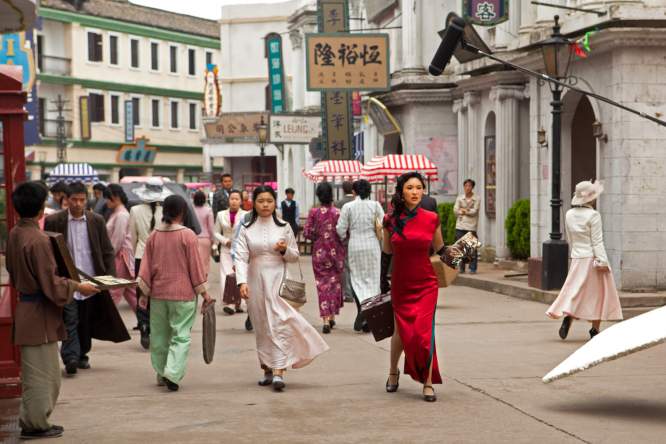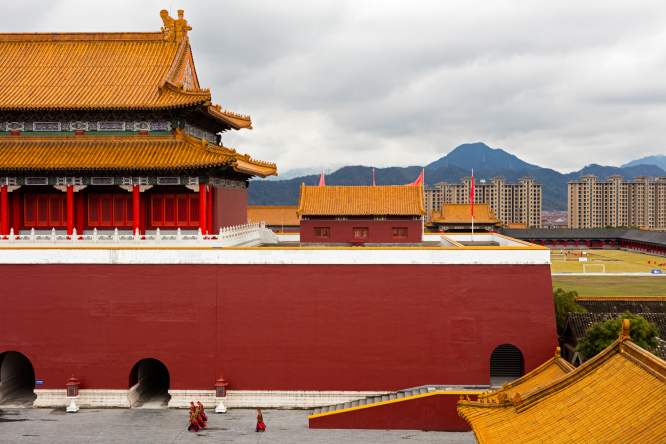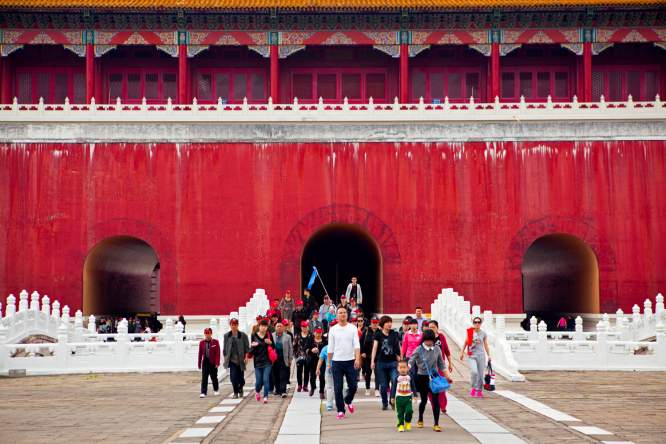Hengdian: The World’s Largest Film Studio

Xie Jin was one of the most important film directors of the Communist cinema generation working in the 1950s and early 1960s. His 1965 film Two Stage Sisters would later go on to receive international acclaim, but at the time, at the start of the Cultural Revolution, it was attacked for purportedly promoting bourgeois values. Xie was eventually rehabilitated and went on to make other important films, including Legend of Tianyun Mountain and Hibiscus Town.
In 1995, Xie, now in his 70s, was scouting locations for a State-supported historical epic titled The Opium War. With a budget of $15 million, it was the most expensive Chinese film ever produced up to that time. Xie was on a tight deadline. A nationwide release of the film was already set for July 1997 to mark the handover of Hong Kong back to China.
In order to make a historically convincing film, Xie faced the challenge of recreating the streets and port of Guangzhou as they would have looked in the 19th Century. A local farmer-turned-entrepreneur named Xu Wenrong proposed using agricultural land in a rural part of Zhejiang province to build the enormous movie set for Xie’s film. Xu hired hundreds of workers to construct 100 Qing houses and an imitation port in three months.
After this, Xu continued to expand, with a grand vision to transform the town of Hengdian into a Chinese Hollywood. The sets would be free for film and TV crews to use, but revenue would be generated from hotels, restaurants and equipment rental. Today Hengdian World Studios is a sprawling complex incorporating several distinct film villages.
The heavily fortified Qin Imperial Palace was constructed for director Chen Kaige’s The Emperor and the Assassin (1998), also the most expensive Chinese film production of its time. It would be used again in Zhang Yimou’s Hero (2002) and 2015 Silk Road action film Dragon Blade with Jackie Chan, John Cusack, and Adrien Brody.
Hengdian also includes a recreated version of the entire Forbidden City to scale, most known today as the location for the TV drama The Story of Yanxi Palace, which became the most Googled TV show of all time and now has a sequel running on Netflix.
Hengdian now brings in more revenue from tourism than from film productions, as tourists flock to see where their favorite films and TV series were made. Hengdian drew over 12 million tourists in 2018. When I visited last, it struck me as odd to see throngs of Chinese tourists from around the country who had all come to visit a fake Forbidden City when the real thing is in Beijing.

